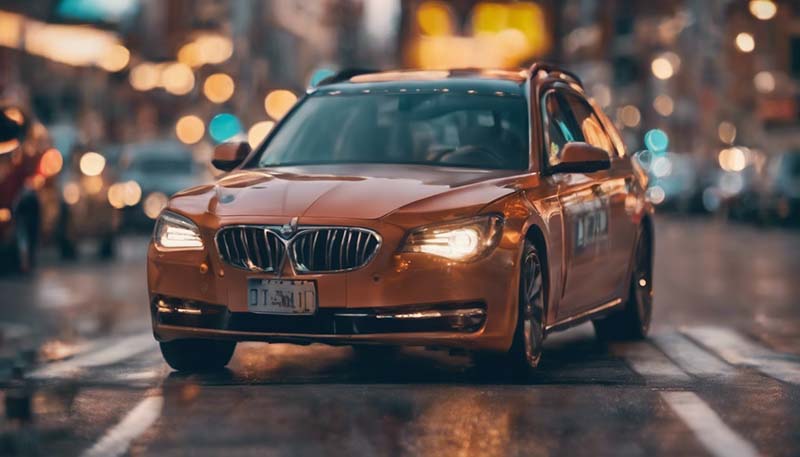The Role of Vehicle Occupant Sensors in Safety Systems
Passive Safety Technologies
The Role of Vehicle Occupant Sensors in Safety Systems
Vehicle occupant sensors play a crucial role in modern safety systems, ensuring the well-being of passengers and drivers alike. These sensors are responsible for detecting the presence, position, and condition of occupants within a vehicle, which in turn allows for the deployment of appropriate safety measures in the event of a collision or other hazardous situation.
Introduction
The automotive industry has seen significant advancements in recent years, with a strong focus on enhancing vehicle safety. One of the key components in this regard is the integration of vehicle occupant sensors, which are designed to provide real-time information about the occupants' status. This information is then used by the vehicle's safety systems to determine the most effective course of action in case of an accident or emergency.
Types of Vehicle Occupant Sensors
There are several types of sensors used in vehicle safety systems, each serving a specific purpose:
- Occupancy Detection Sensors: These sensors detect the presence of occupants in the vehicle, typically using infrared or ultrasonic technology. They are often used to determine whether airbags should be deployed in the event of a collision.
- Seat Position Sensors: These sensors determine the position of the driver and front passenger relative to the airbags, allowing the vehicle's safety systems to adjust the airbag deployment based on the occupants' proximity.
- Weight Sensors: By measuring the weight on the vehicle's seats, these sensors can differentiate between adults, children, and even pets, enabling the safety systems to make more informed decisions about airbag deployment.
- Crash Sensors: These sensors detect the severity and type of collision, providing valuable data to the vehicle's safety systems to determine the appropriate response.
- Pedestrian Detection Sensors: Using a combination of cameras, radar, and lidar, these sensors can identify pedestrians in the vehicle's path and alert the driver or even apply the brakes automatically to avoid a collision.
How Vehicle Occupant Sensors Work
Vehicle occupant sensors work in tandem with the vehicle's safety systems to create a comprehensive safety network. Here's a brief overview of how they function:
Advertisement
- Detection: The sensors continuously monitor the vehicle's interior and exterior, identifying the presence and position of occupants and potential hazards.
- Data Processing: The collected data is processed by the vehicle's control unit, which assesses the situation and determines the appropriate response.
- Response: Based on the processed data, the vehicle's safety systems may take various actions, such as activating airbags, tightening seatbelts, or applying the brakes in case of an imminent collision.
- Post-Collision: After a collision, the sensors may continue to monitor the occupants' status and trigger additional safety measures, such as activating hazard lights or unlocking doors to facilitate rescue efforts.
Benefits of Vehicle Occupant Sensors
The integration of vehicle occupant sensors offers numerous benefits, including:
- Enhanced Safety: By providing real-time information about the occupants' status, these sensors allow for more accurate and effective deployment of safety measures.
- Customized Protection: Vehicle occupant sensors enable the safety systems to tailor their response to the specific needs of each occupant, such as adjusting airbag deployment for children or smaller adults.
- Prevention of Injuries: By detecting potential hazards and taking preventive measures, these sensors can significantly reduce the risk of injuries in the event of a collision.
- Cost Reduction: The use of vehicle occupant sensors can lead to a reduction in the severity of accidents, which in turn can result in lower insurance premiums and repair costs.
- Legal Compliance: Many countries have implemented stringent safety regulations, and the use of vehicle occupant sensors can help manufacturers meet these requirements.
Challenges and Future Developments
Despite their numerous benefits, vehicle occupant sensors also face several challenges, such as:
- Cost: The integration of advanced sensor technology can increase the overall cost of a vehicle, which may be a deterrent for some consumers.
- Reliability: Ensuring the consistent and accurate performance of these sensors is crucial, as any malfunction could lead to inadequate safety measures in critical situations.
- Privacy Concerns: The use of sensors that monitor occupants' movements and positions may raise privacy concerns, particularly with the increasing adoption of connected and autonomous vehicles.
Looking ahead, the automotive industry is expected to continue refining and enhancing vehicle occupant sensors. Future developments may include:
- Improved Accuracy: Ongoing research and development efforts are focused on improving the accuracy and reliability of these sensors, ensuring more effective safety measures.
- Integration with Autonomous Vehicles: As autonomous vehicles become more prevalent, vehicle occupant sensors will play an even more critical role in ensuring the safety of passengers and pedestrians alike.
- Advanced Data Processing: The use of advanced data processing techniques, such as artificial intelligence and machine learning, can help improve the interpretation of sensor data and enhance the overall effectiveness of vehicle safety systems.
Conclusion
Vehicle occupant sensors are a vital component of modern safety systems, providing crucial information to protect occupants in the event of a collision or other hazardous situation. As technology continues to advance, these sensors are expected to become even more accurate, reliable, and integrated into the broader ecosystem of connected and autonomous vehicles, ultimately contributing to a safer driving experience for all road users.
